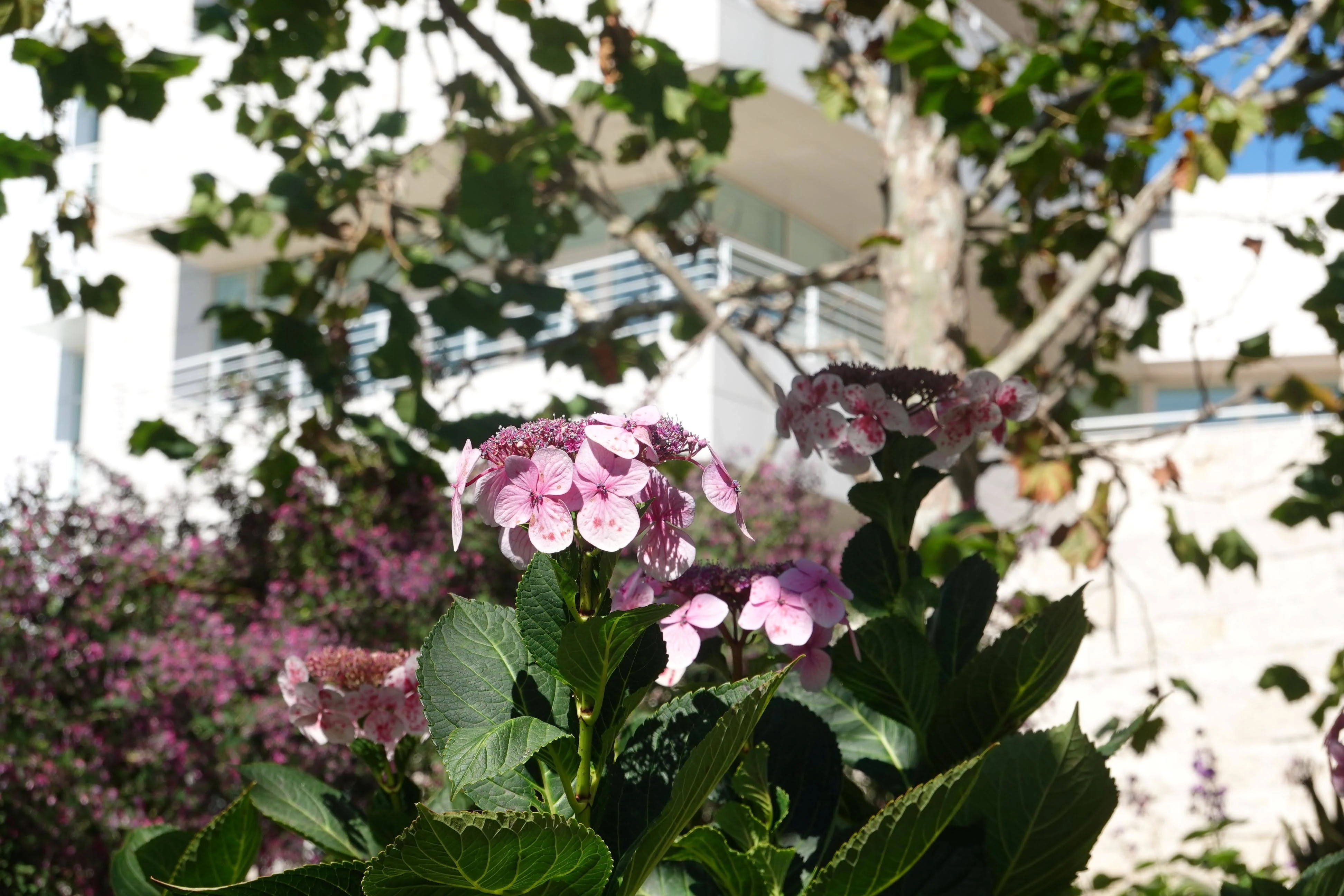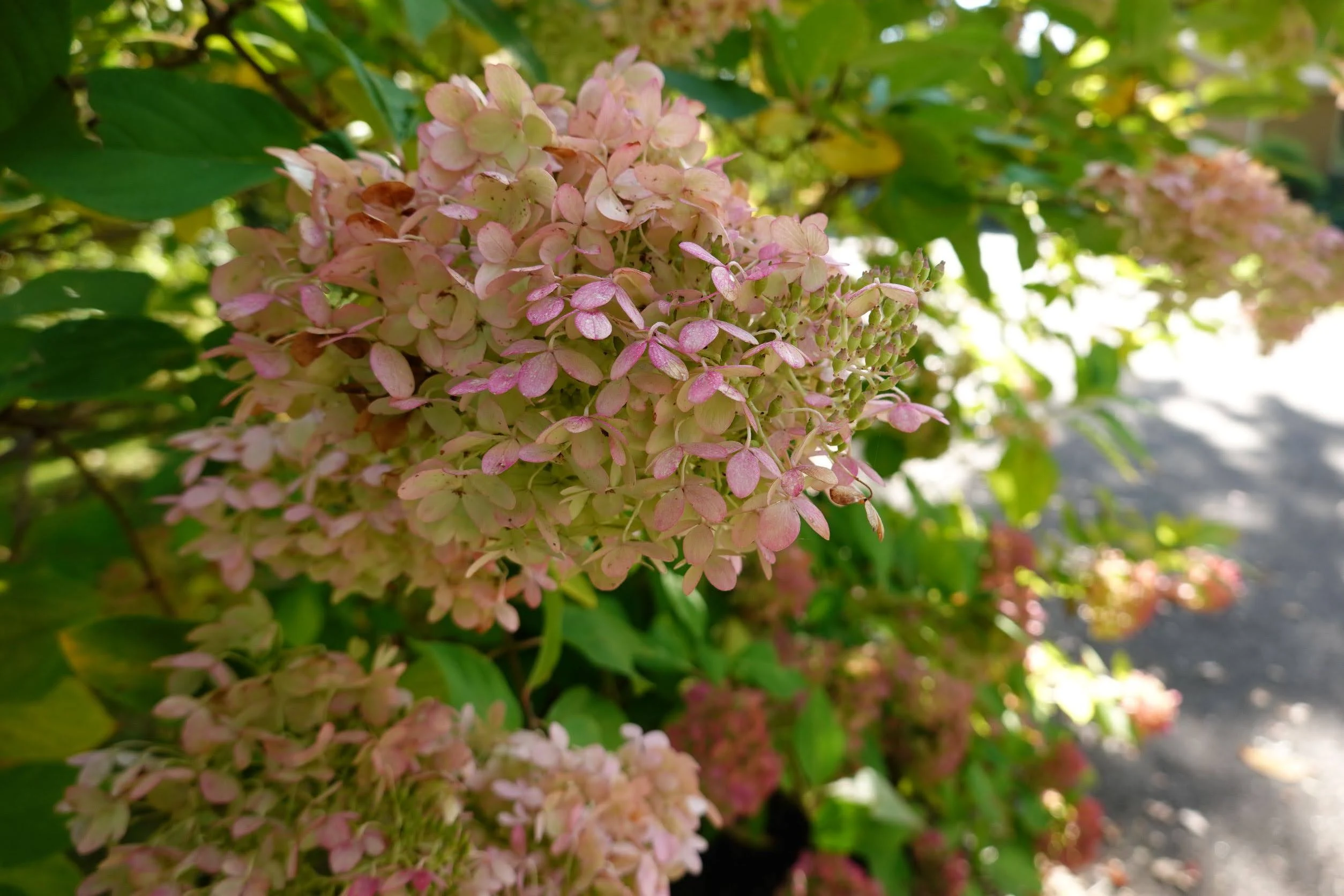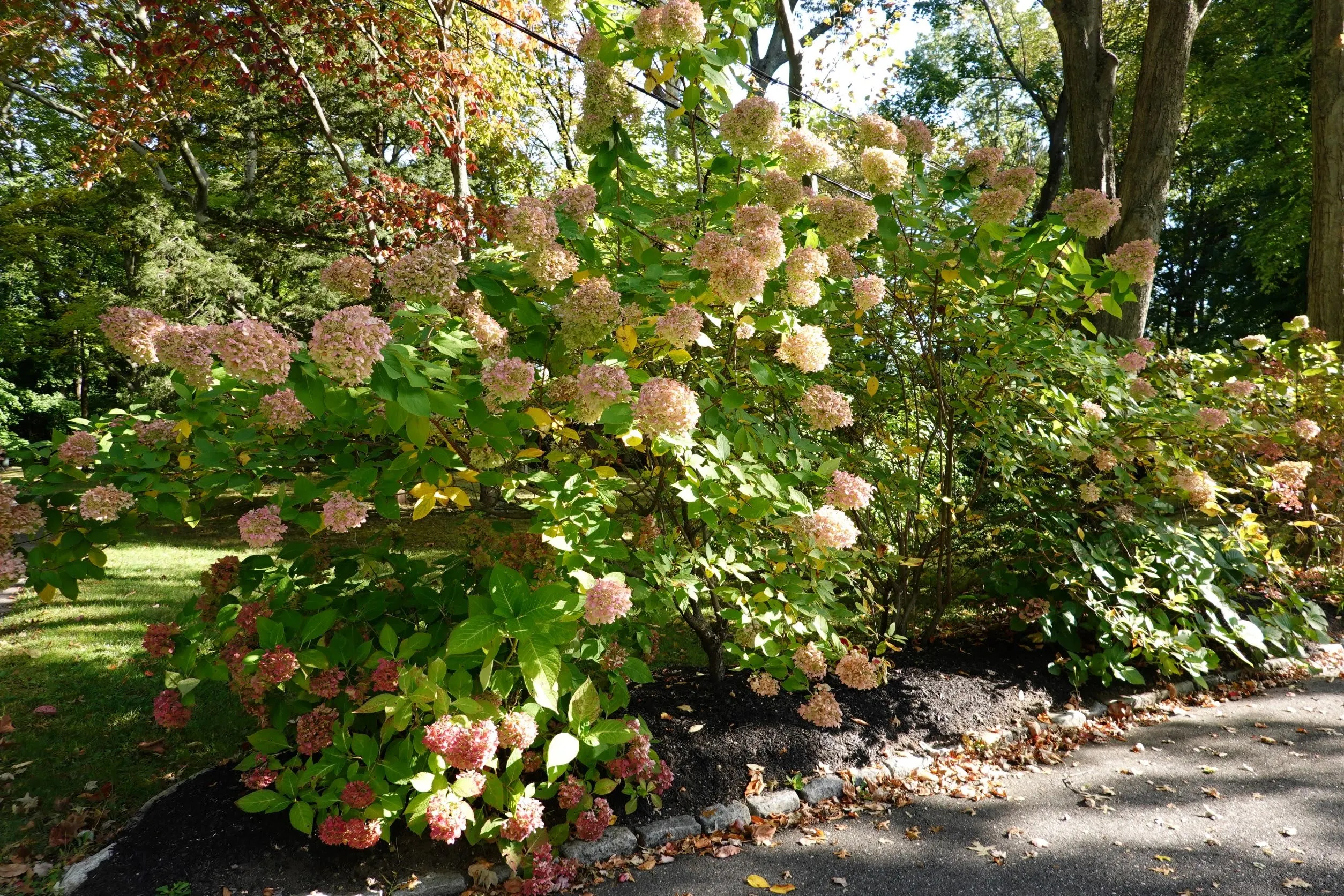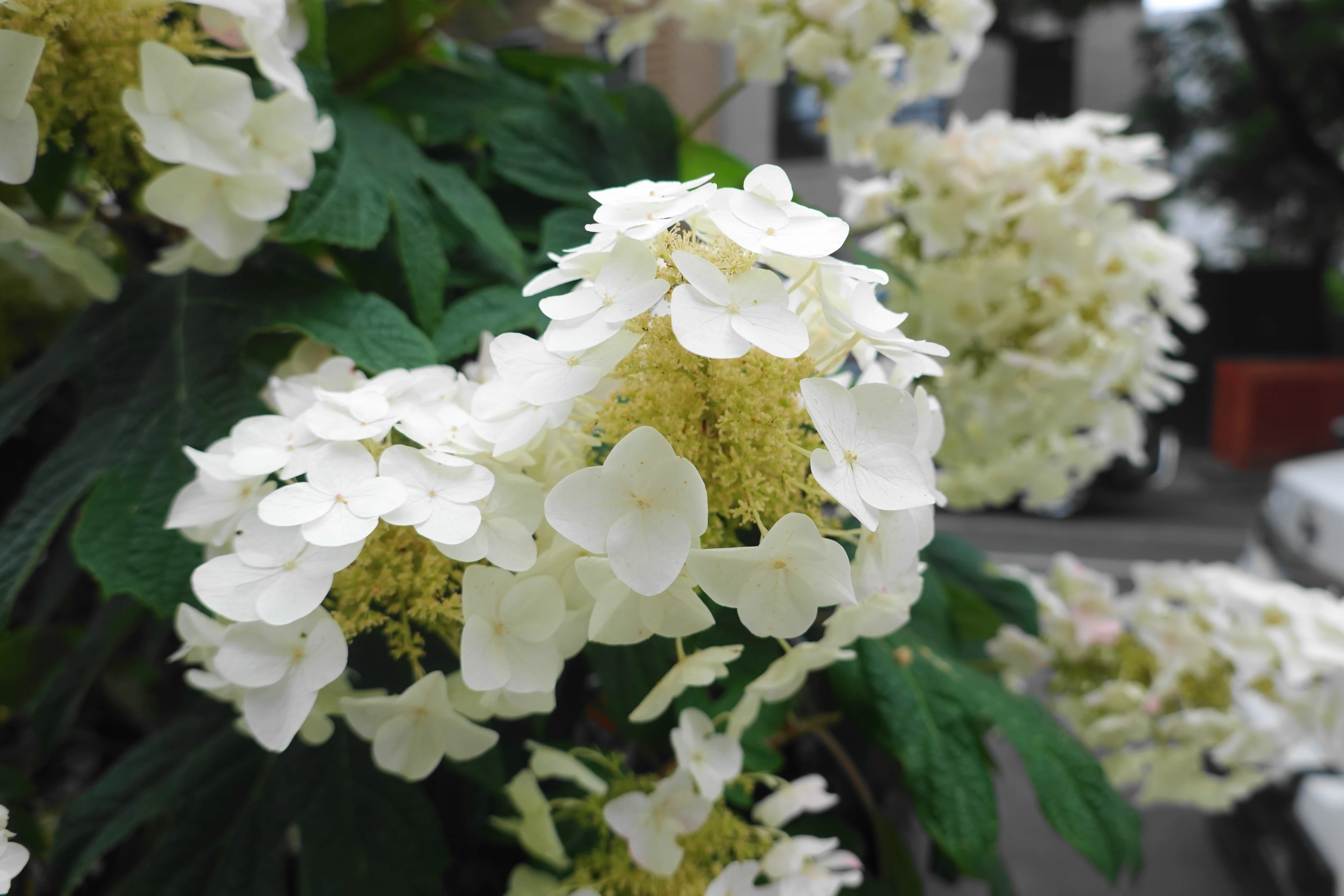I love all kinds of hydrangeas. I am often attracted by their bright colors or delicate flower shapes. Hydrangea is a genus of more than 90 species of flowering plants native to Asia and the Americas. They can be either deciduous or evergreen, though the widely cultivated temperate species are all deciduous. The flowers are almost all asexual, and the so-called "flowers" are just sepals. The flowers of many hydrangeas act as natural pH indicators, producing blue flowers when the soil is acidic and pink ones when the soil is alkaline. Therefore, the flower color can be changed by adjusting the pH value of the soil. It can be propagated by cuttings. Hydrangea root and rhizome are indicated for the treatment of conditions of the urinary tract in the Physicians' Desk Reference for Herbal Medicine and may have diuretic properties. Hydrangeas are moderately toxic if eaten, with all parts of the plant containing cyanogenic glycosides. Hydrangea paniculata is reportedly sometimes smoked as an intoxicant, despite the danger of illness and/or death due to the cyanide.
我非常喜歡各種各色各樣的繡球花,常被它們鮮艷的顏色或精緻的花型吸引住。繡球屬也稱光繡球屬,原產於亞洲和美洲,包含 90 多種開花植物。繡球花可以是落葉植物,也可以是常綠植物,但廣泛栽培的溫帶品種均為落葉植物。花幾乎全為無性花,所謂的「花」只是萼片而已。許多繡球花的花朵具有天然的酸鹼度指示作用,當土壤酸性時會開出藍色花朵,而當土壤鹼性時則會開出粉紅色花朵。因此可通過調節土壤的pH值來改變花色。可用扦插法繁殖。《醫師用藥參考》指出繡球花的根和根莖可用於治療泌尿道疾病,並可能具有利尿作用。繡球花食用後有中等毒性,其所有部分均含有氰苷。 據報道雖然氰化物有導致疾病和/或死亡的危險,但人們有時會將繡球花當作麻醉劑吸食。
































Notes 筆記
- Hydrangea is a genus of more than 90 species of flowering plants native to Asia and the Americas. Most are shrubs 1–3 m (3 ft 3 in – 9 ft 10 in) tall, but some are small trees, and others lianas reach up to 30 m (100 ft) by climbing up trees. They can be either deciduous or evergreen, though the widely cultivated temperate species are all deciduous.
- The flowers are almost all asexual, and the so-called "flowers" are just sepals. The flowers of many hydrangeas act as natural pH indicators, producing blue flowers when the soil is acidic and pink ones when the soil is alkaline. Therefore, the flower color can be changed by adjusting the pH value of the soil. It can be propagated by cuttings.
- Hydrangea is derived from Greek and means 'water vessel' in reference to the shape of its seed capsules.
- Hydrangeas are popular ornamental plants, grown for their large flowerheads, with Hydrangea macrophylla being by far the most widely grown. It has over 600 named cultivars, many selected to have only large sterile flowers in the flowerheads. Hydrangea macrophylla, also known as bigleaf hydrangea, can be broken up into two main categories; mophead hydrangea and lacecap hydrangea.
- Hydrangea root and rhizome are indicated for the treatment of conditions of the urinary tract in the Physicians' Desk Reference for Herbal Medicine and may have diuretic properties. Hydrangeas are moderately toxic if eaten, with all parts of the plant containing cyanogenic glycosides. Hydrangea paniculata is reportedly sometimes smoked as an intoxicant, despite the danger of illness and/or death due to the cyanide.
- In Japan, ama-cha (甘茶), meaning sweet tea, is another herbal tea made from Hydrangea serrata, whose leaves contain a substance that develops a sweet taste (phyllodulcin). For the fullest taste, fresh leaves are crumpled, steamed, and dried, yielding dark brown tea leaves. Ama-cha is mainly used for kan-butsu-e (the Buddha bathing ceremony) on April 8 every year—the day thought to be Buddha's birthday in Japan. During the ceremony, ama-cha is poured over a statue of Buddha and served to people in attendance. A legend has it that on the day Buddha was born, nine dragons poured Amrita over him; ama-cha is substituted for Amrita in Japan.
- In Korean tea, Hydrangea serrata is used for an herbal tea called sugukcha (수국차) or isulcha (이슬차).
- Hydrangea quercifolia was declared the official state wildflower of the U.S. state of Alabama in 1999.
- Hydrangeas were used by the Cherokee people of what is now the Southern U.S. as a mild diuretic and cathartic; it was considered a valuable remedy for stone and gravel in the bladder.
- 繡球屬也稱光繡球屬,原產於亞洲和美洲,包含 90 多種開花植物。大多數為灌木,高 1-3 公尺,也有一些為小喬木,還有一些藤本植物攀爬樹木,可高達30公尺(100英尺)。繡球花可以是落葉植物,也可以是常綠植物,但廣泛栽培的溫帶品種均為落葉植物。
- 花幾乎全為無性花,所謂的「花」只是萼片而已。許多繡球花的花朵具有天然的酸鹼度指示作用,當土壤酸性時會開出藍色花朵,而當土壤鹼性時則會開出粉紅色花朵。因此可通過調節土壤的pH值來改變花色。可用扦插法繁殖。
- 屬名 Hydrangea 源於希臘語 hydor(水)和 angeion(容器)的合成詞,指本屬的果形似水壺。
- 繡球屬是廣受歡迎的觀賞植物,因其豐碩的花頭而備受青睞,其中繡球花(Hydrangea macrophylla)是迄今為止種植最廣泛的品種。它有超過 600 個已命名的栽培品種,其中許多品種的花頭狀花序長有大型不育花。繡球花可分為兩大類:拖把頭繡球花及蕾絲繡球花。
- 《醫師用藥參考》指出繡球花的根和根莖可用於治療泌尿道疾病,並可能具有利尿作用。繡球花食用後有中等毒性,其所有部分均含有氰苷。 據報道雖然氰化物有導致疾病和/或死亡的危險,但人們有時會將繡球花當作麻醉劑吸食。
- 在日本,甘茶(ama-cha)意為甜茶,是另一種用繡球花(Hydrangea serrata)製成的涼茶。繡球花的葉子含有一種能產生甜味的葉甜素。為了獲得最佳的口感,鮮葉會被搓揉、蒸煮、乾燥,最後得到深棕色的茶葉。甘茶主要用於每年 4 月 8 日舉行的「浴佛會」(kan-butsu-e)。在日本,這一天被認為是佛祖的生日。在儀式上,人們會將甘茶澆在佛像上,並供奉給參加儀式的人。傳說佛祖誕生之日,九條龍將甘露(Amrita)澆在佛祖身上;在日本,甘茶是甘露的替代品。
- 在韓國茶中,粗齒繡球被用於一種稱為 Sugukcha (수국차) 或 Isulcha ( Been) 的花草茶。
- 1999 年,櫟葉繡球花被宣佈為美國阿拉巴馬州的州野花。
- 繡球花被現今美國南部的切羅基人用作溫和的利尿劑和瀉藥;它被認為是治療膀胱結石和砂礫的有效藥物。
References 參考資料
Plants Posts 植物的帖子
Comments